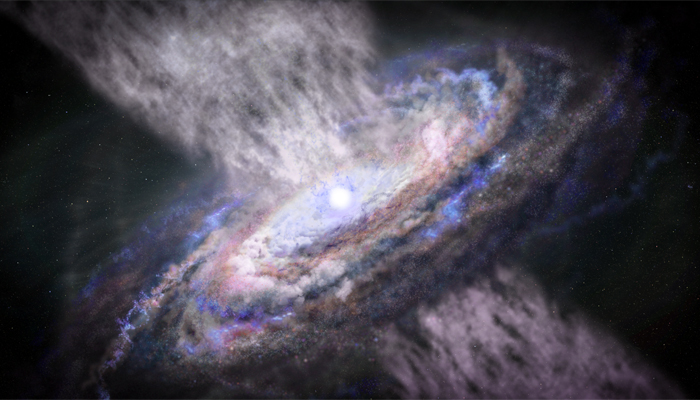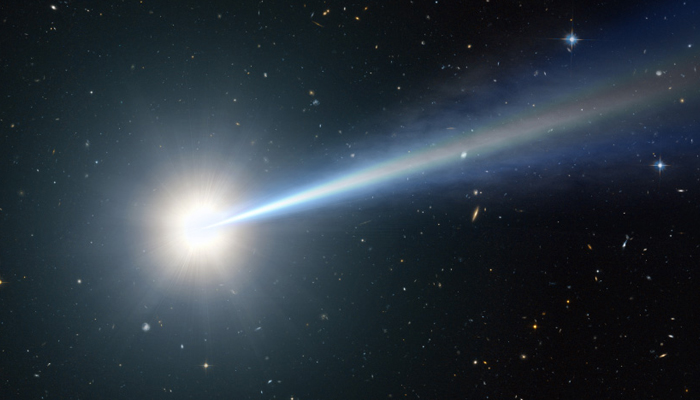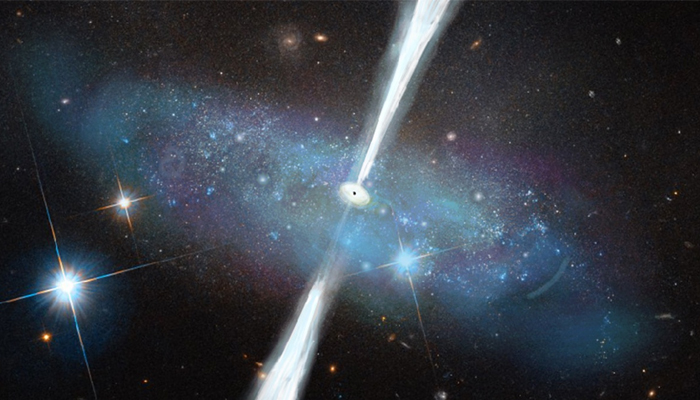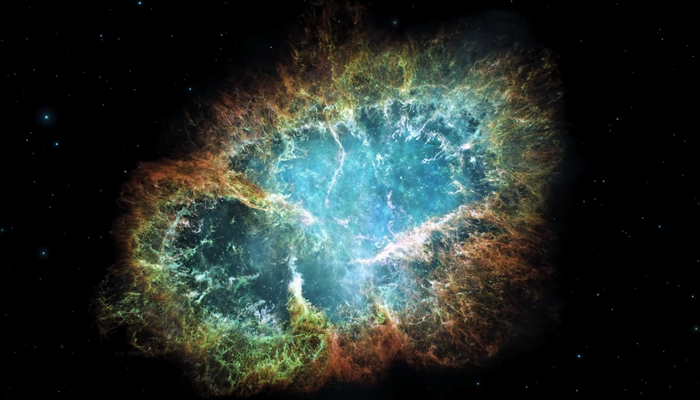Einstein was right: Time passed 5x slower when universe was a baby, study reveals
Quasars are tremendously active supermassive black holes billions of times more massive than our sun
July 04, 2023

Scientists have revealed in their new study that time passed slower in the early age of the universe — about 12.43 billion years ago — than the current as astronomers used quasars as a clock to determine and measure how time passed in the early universe, reported Reuters.
Quasars are tremendously active supermassive black holes billions of times more massive than our sun, usually residing at the centres of large galaxies.
They pull matter into themselves as they have immense gravitational force, unleashing torrents of radiation including jets of high-energy particles, while a glowing disk of highly charged matter spins around them.
The study was conducted by observing the brightness of 190 quasars across the universe dating to about 1.5 billion years after the Big Bang — an event which is theorised to give birth to the universe.
The study was published in the journal Nature Astronomy.

Scientists compared the luminosity of the quasars at various wavelengths with the ones of today, finding that certain fluctuations that take place in a particular amount of time today did so five times more slowly in the most ancient quasars.
According to Einstein’s theory of general relativity, time and space are intertwined and the universe has been expanding outward in all directions since the Big Bang.
Astrophysicist Geraint Lewis of the University of Sydney in Australia, the lead author of the study, said this continual expansion explains how time flowed more slowly earlier in the universe's history relative to today.
It does not mean everything was moving in slow motion. A second would feel like a second to someone if had existed then however, from the perspective of a person today, a second back then would feel like today’s five.
"In modern physics, time is a complicated thing," Lewis said.

"Dr Who had it right, that time is best described as 'wibbly-wobbly, timey-wimey stuff.' This means that we don't really understand time and its limitation, and some things are still not ruled out: time travel, warp drives, etc. The future could be very exciting, though maybe not."
By looking at faraway objects, scientists peer back in time because of how long it takes for light to travel through space.
Scientists previously documented time dilation dating to roughly 7 billion years ago, based on observations of star explosions called supernovas.
Already knowing the time, it takes for today's supernovas to brighten and fade, they studied these explosions in the past — those at great distances from Earth — and found that these events unfolded more slowly than from our time perspective.

The explosion of individual stars cannot be seen beyond a certain distance away, limiting their use in studying the early universe. Quasars are so bright that they can be observed back to the universe's infant stages.
"What is observed over time is the quasar brightness. This fluctuates up and down, the result of lots of complicated physics in the disk of matter spinning around a black hole at almost light speed.”
“This change in brightness is not simply a bright, fade, bright, fade. It looks more like the stock market, with small-scale jitters on longer-term changes, with some sharp fluctuations," Lewis said.
"The statistical properties of the light variations contain a time scale - a typical time for the fluctuations to possess a particular statistical property. And it is this we use to set the ticking of each quasar," Lewis added









